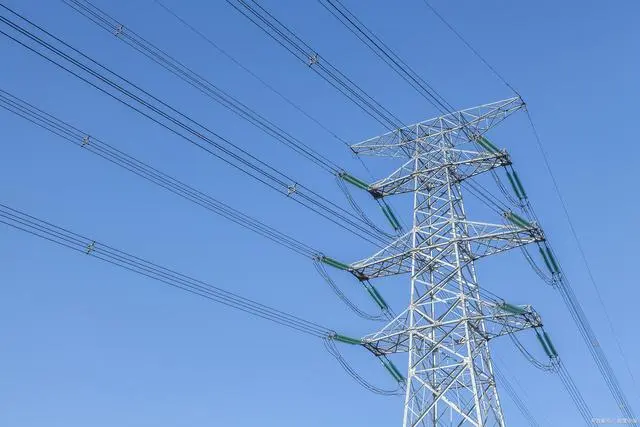Fundamentals of Electric Power Transmission: Voltage, Long-Distance Transmission and Conductor Technology
2025-08-28
1. Classification of voltage levels
In overhead power lines, the rated voltage is determined based on the magnitude of the transmitted power and the distance of transmission. Generally speaking, the higher the voltage, the greater the power transmitted and the farther the transmission distance. For instance, for a 35kV overhead power line, when the transmission distance is around 50km, the general transmission power is 10,000 to 20,000 kW. For 110kV lines, when the transmission distance is approximately 100km, the transmission power is 30,000 to 60,000 kW. For 220kV lines, when the transmission distance is 200 to 300 kilometers, the power that can be transmitted is 200,000 to 250,000 kW. Generally, it is classified as follows:
(1)220/380V is low voltage;
(2)3, 6, 10, and 20kV are referred to as medium voltage.
(3)35 kV, 110 kV and 220kV are called high voltage.
(4)330 kV, 500 kV and 750kV are called ultra-high voltage.
(5)1000kV is called ultra-high voltage.
2. Why do we need long-distance power transmission
76% of China's coal resources are distributed in the north and northwest. Eighty percent of the hydropower resources are distributed in the southwest. The vast majority of onshore wind and solar energy resources are distributed in the northwest. Meanwhile, over 70% of energy demand is concentrated in the eastern and central regions, namely the Yangtze River Delta, the Pearl River Delta, the Beijing-Tianjin-Tangshan Bohai Rim and other areas. The distance between the energy base and the load center is 1,000 to 3,000 kilometers. Large-scale power source construction in the load center area will be restricted by issues such as coal transportation and environmental capacity. Moreover, the construction of thermal power can rely on the transportation of coal, but for hydropower and wind power, it is impossible to transport water and wind in the same way as coal, and thus it is even more impossible to achieve. On one hand, it is impossible to build power sources on a large scale; on the other hand, it can only sigh at the precious clean energy sources such as hydropower and wind power. Therefore, building power sources in the western and northern regions rich in energy resources and then delivering electricity to load centers has become the best choice. However, with the rapid development of China's economy, the current grid structure with 500kV ultra-high voltage lines as the main network has shown the disadvantages of small transmission capacity and inability to achieve large-span and long-distance transmission. It is imperative to establish a grid structure with a higher voltage level. Ultra-high voltage power grids refer to transmission grids with AC voltage levels of 1000kV and DC voltage levels of ±800kV and above. Their most prominent feature is the ability to transmit electricity over long distances, in large capacities, and with low losses. Based on natural power, the transmission capacity of a 1000kV AC ultra-high voltage transmission line exceeds 5 million kW, which is nearly five times that of a 500kV ultra-high voltage AC transmission line. The transmission capacity of ±800kV DC ultra-high voltage lines reaches 7 million kW, which is 2.4 times that of most current ±500kV ultra-high voltage DC lines.

3. Transmission form
There are two basic forms of power transmission: one is overhead transmission lines for power transmission; Another type is power cable transmission. There are mainly two types of power transmission methods: AC transmission and DC transmission. The so-called AC transmission usually refers to three-phase AC transmission. Direct current transmission includes two-terminal direct current transmission and multi-terminal direct current transmission. The vast majority of direct current transmission projects are two-terminal direct current transmission. For AC transmission, the transmission grid is composed of step-up transformers in step-up substations, high-voltage transmission lines, and step-down transformers in step-down substations. For DC transmission, its transmission function is realized by the DC transmission lines and various converter equipment, including primary and secondary equipment, in the converter stations at both ends. In the power transmission grid, transmission lines, poles and towers, insulator strings, overhead ground wires and fittings, etc. are called transmission equipment. Overhead power lines are the erection of transmission conductors on poles and towers with insulators and hardware, keeping the conductors at a certain distance from the ground and buildings. Overhead power transmission has the advantages of low investment and convenient maintenance and repair, and thus has been widely applied. Its drawback is that it is vulnerable to natural disasters such as wind, snow and lightning strikes.
Power cable lines use power cables buried underground or laid in cable trenches to transmit electrical energy. The advantages of cable lines are that they occupy less space, are not affected by external interference, are safe and reliable, and do not affect ground greening and tidiness. The disadvantages are that the project cost is high and it is rather difficult to inspect and handle accidents. Cable lines are mainly used in some urban power distribution lines and for power transmission across rivers and seas.
4. Wire
Conductors are the main components of overhead lines. They are responsible for transmitting electrical energy. Conductors are set up on poles through insulators. Besides bearing their own weight and external forces such as wind, rain and snow, they also have to withstand the erosion of chemical impurities in the air. Therefore, conductors must have good electrical conductivity, sufficient mechanical strength and corrosion resistance. And it should be as light in weight and as low in price as possible. The materials of the conductors are metals such as copper and aluminum. In transmission lines, steel-cored aluminum stranded wires are mostly used, which are characterized by high mechanical strength and light weight. Split conductors are a type of conductor erection method adopted on high-voltage long-distance transmission lines to suppress corona discharge and reduce line reactance. That is, each phase of the conductor is composed of 2 to 8 sub-conductors with smaller diameters, which are isolated and fixed by spacer rods. The distance between each sub-conductor is 0.2 to 0.5 meters, and they are arranged in a symmetrical polygonal shape at the vertices of the spacer rods. Split conductors are mainly used in lines with voltages of 220kV and above. Generally, they are classified into several types such as two-split wires, three-split wires, four-split wires, six-split wires, and eight-split wires.
In the process of power transmission, the classification of voltage levels, the necessity of long-distance power transmission, the selection of power transmission forms, and the design of conductors are all crucial factors. With the rapid development of China's economy and the continuous increase in energy demand, the construction of ultra-high voltage power grids has become particularly important. It not only enables long-distance, large-capacity, and low-loss power transmission, but also effectively conveys abundant clean energy from resource-rich regions to load centers. By rationally choosing overhead transmission and cable transmission methods, as well as adopting high-performance conductor materials, we can better address the challenges of future power transmission and ensure the safe, stable and efficient operation of the power system. Looking ahead, with the continuous advancement of technology and the changing demands for electricity, the field of power transmission will witness more innovations and developments, providing strong support for achieving sustainable energy utilization and the coordinated development of the economy and society.

Hey, I’m Chunjian Shu
"X.Y. Tower: Reliable, innovative solutions for high-quality towers and electrical equipment with professional service.
